It is a formal document that describes the goals and objectives of a project, the work that needs to be done to achieve them, and the expected outcomes.
It also identifies key stakeholders, the project’s purpose, and its constraints. It acts as a guide for the decisions made by stakeholders about the project to ensure that they align with the goals they have set. Its main aim is to clarify the various aspects of the project.
It can be created by a business analyst, the project team, key stakeholders, and business partners. It is used by business sponsors, higher management, and analysts to help them understand important aspects of the project. By making sure that the requirements are not misunderstood, it enables the team to carry out the project successfully. It makes sure that everyone involved in the project, including the team, is clear on the requirements and the desired outcome. It makes it simpler for stakeholders to keep track of the project’s progress by letting them know when significant milestones are reached.
The business can also avoid the costs of reworking the project, such as those related to infrastructure, training, and changes, by using this document. Finally, it aids in bridging the gap between the project’s needs and objectives.
Free Templates
Word format
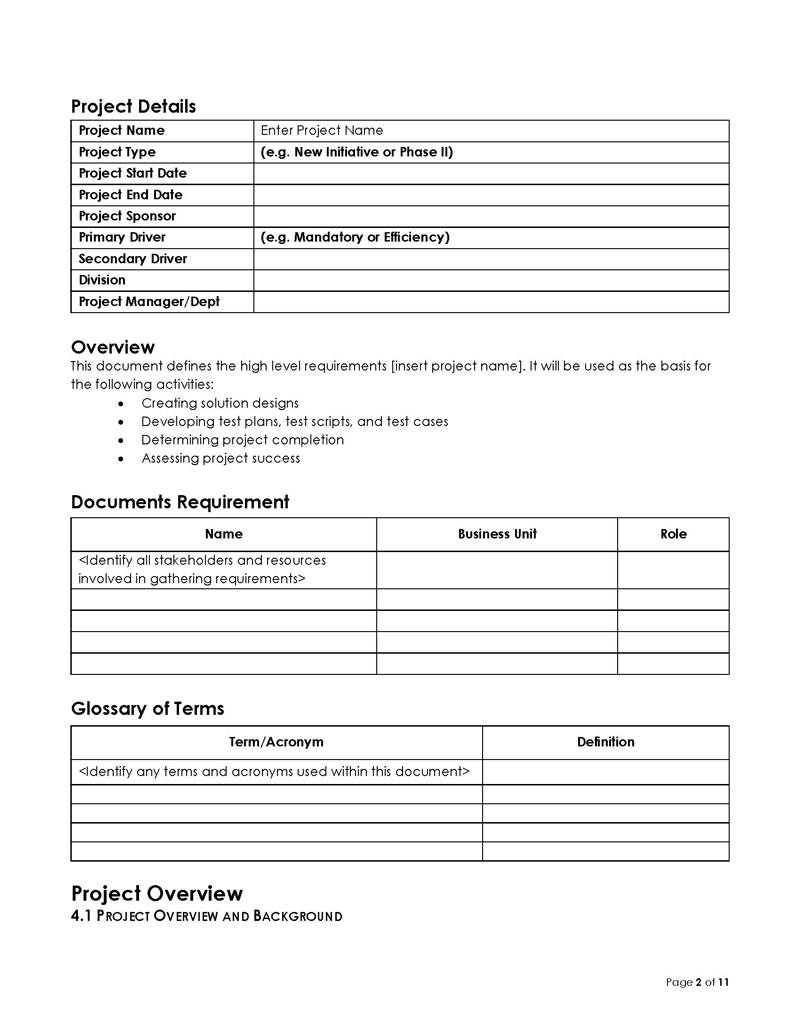
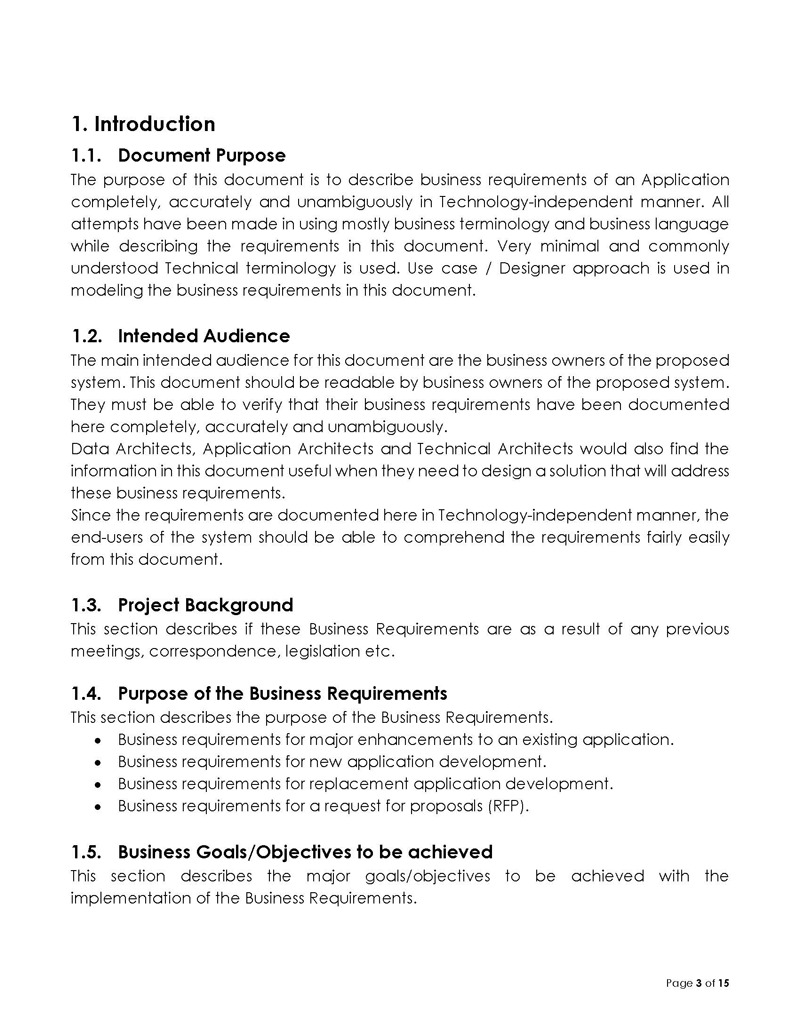
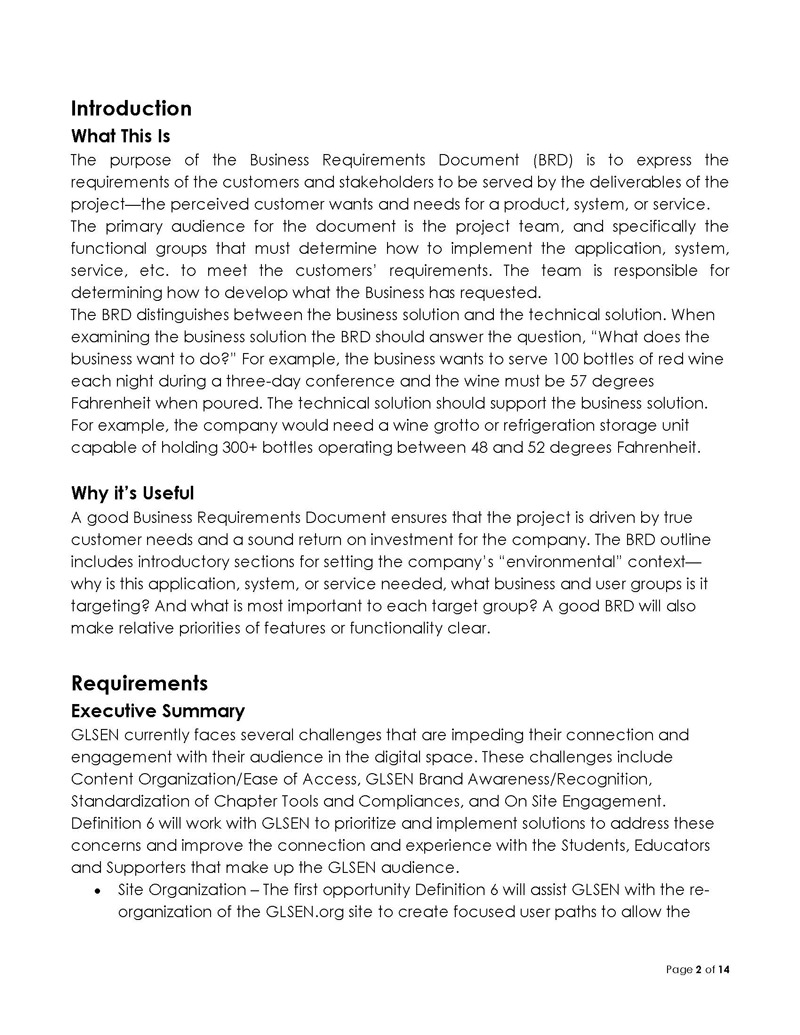
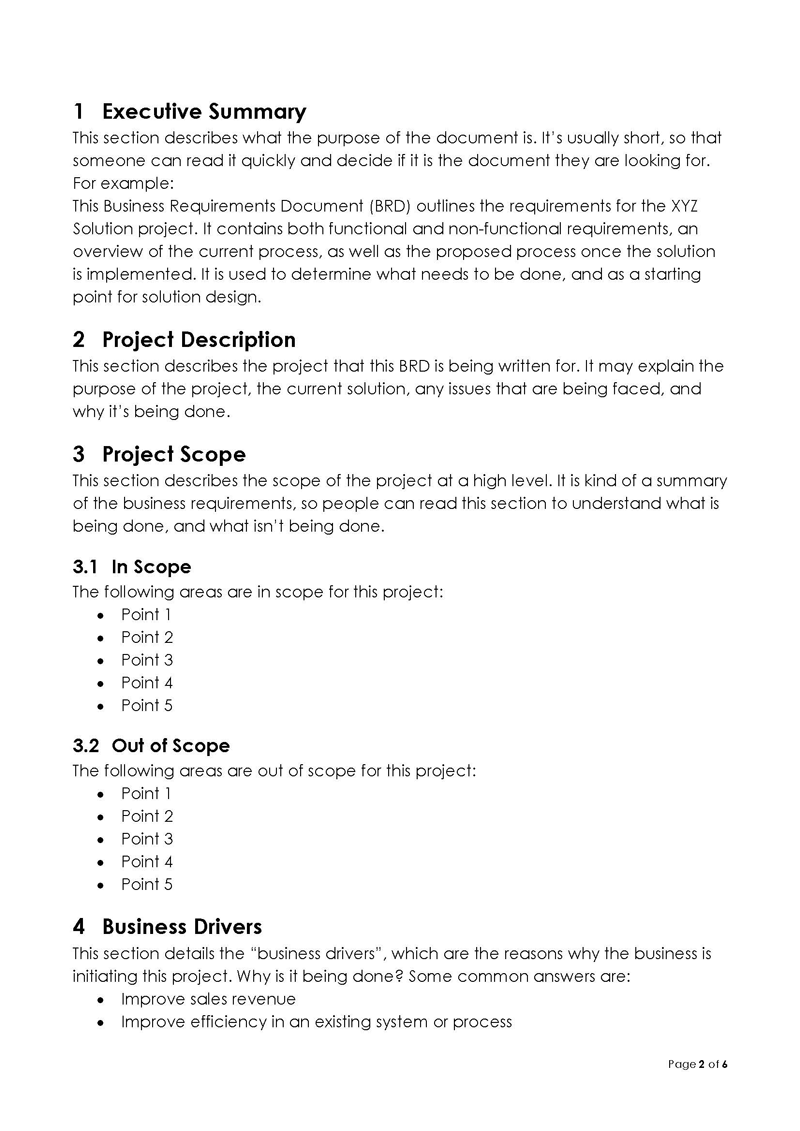
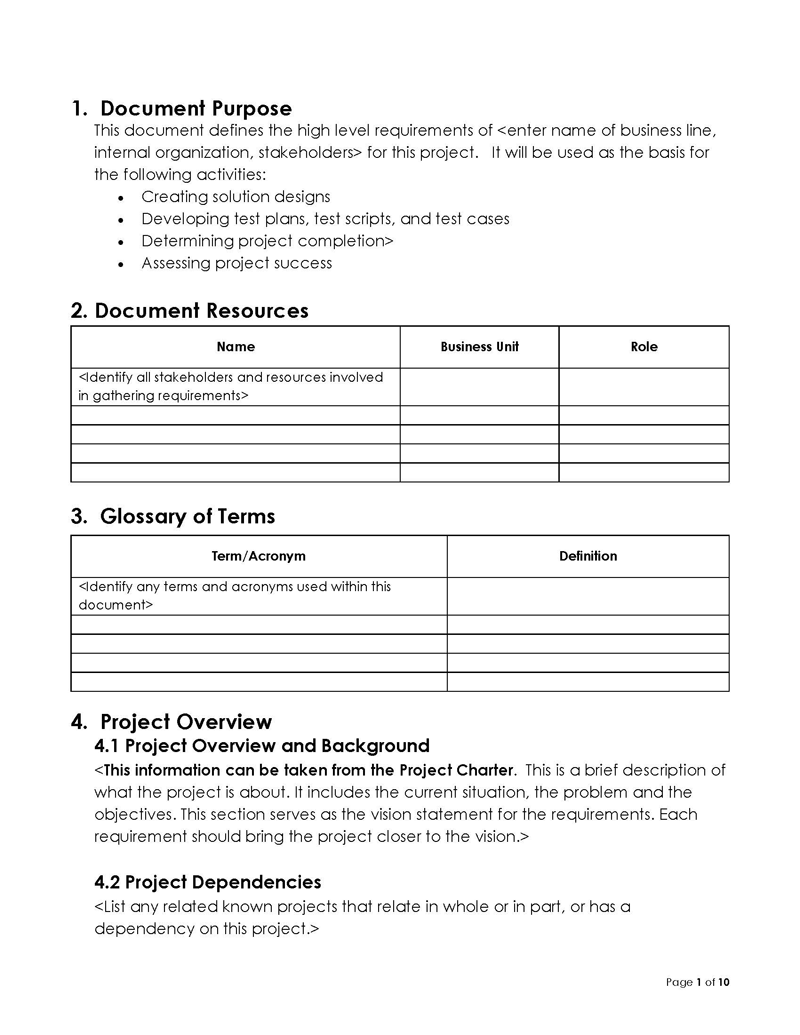
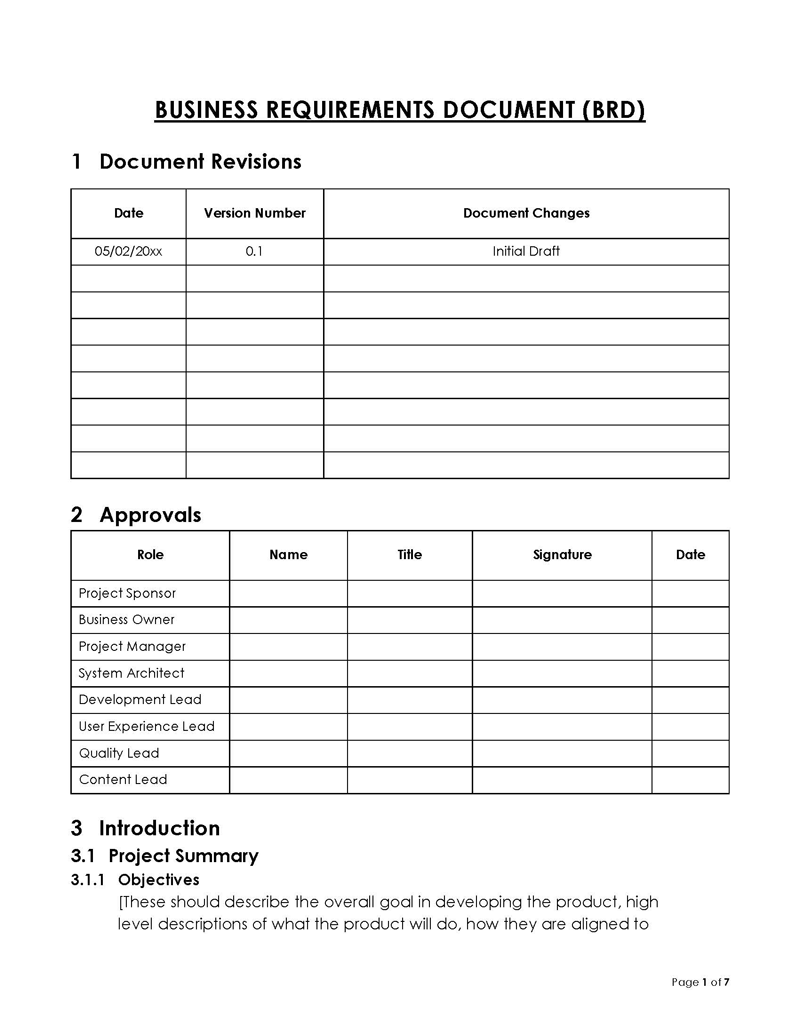
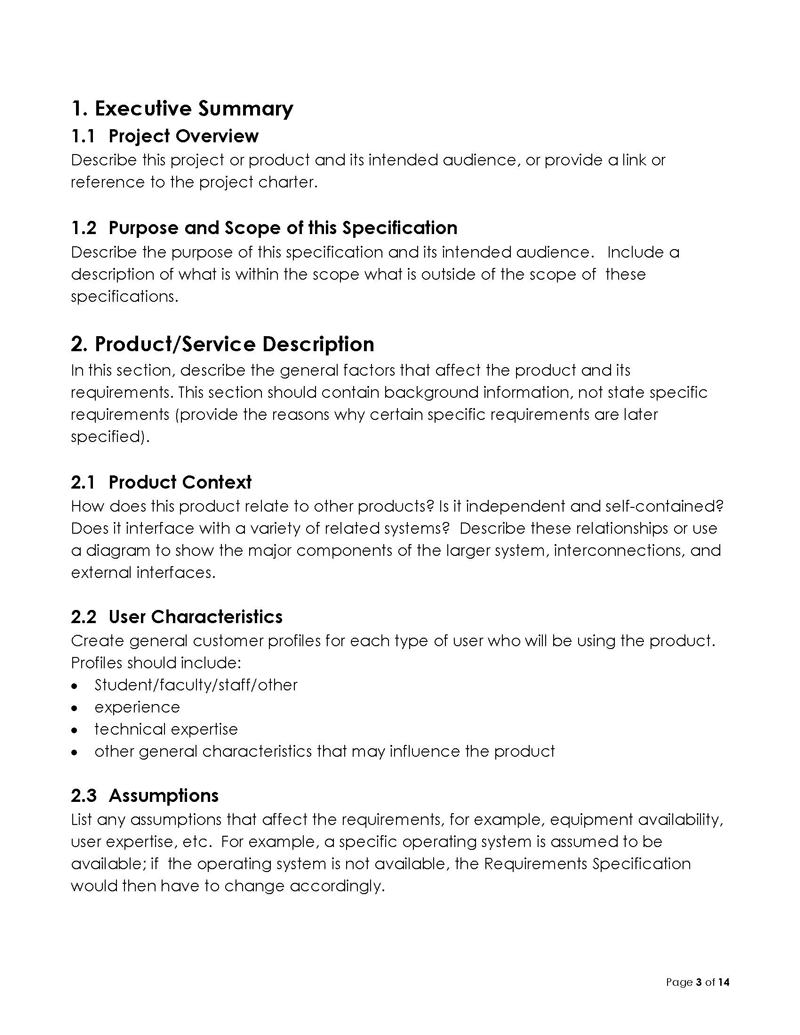
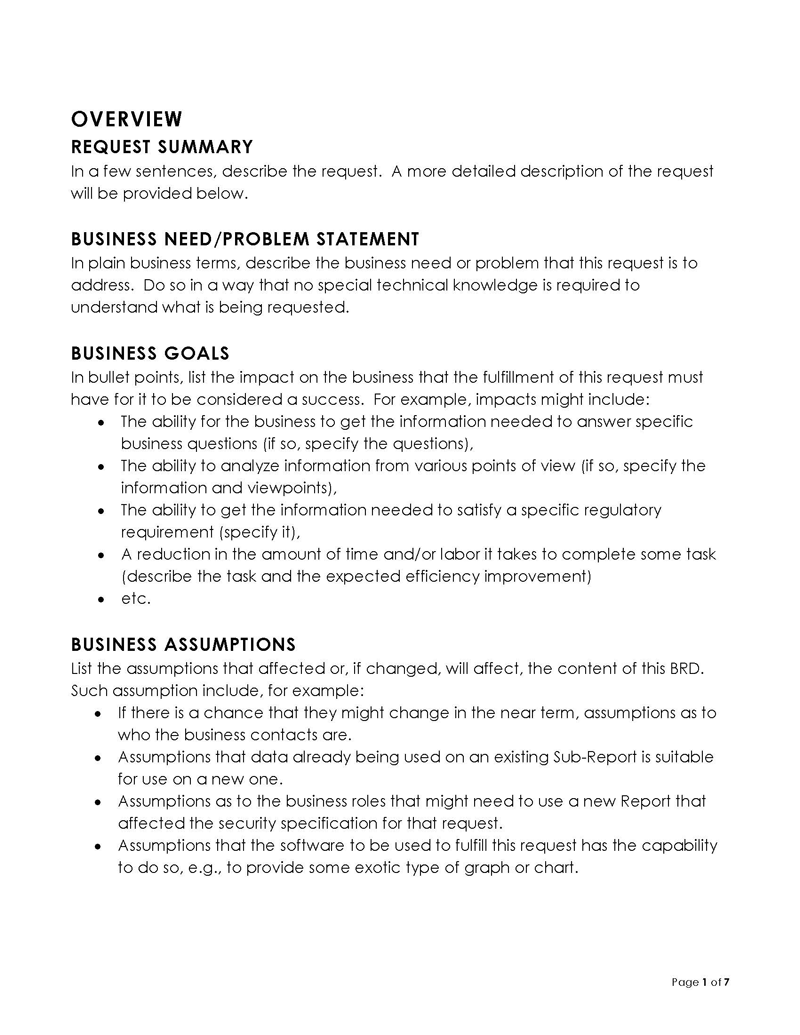
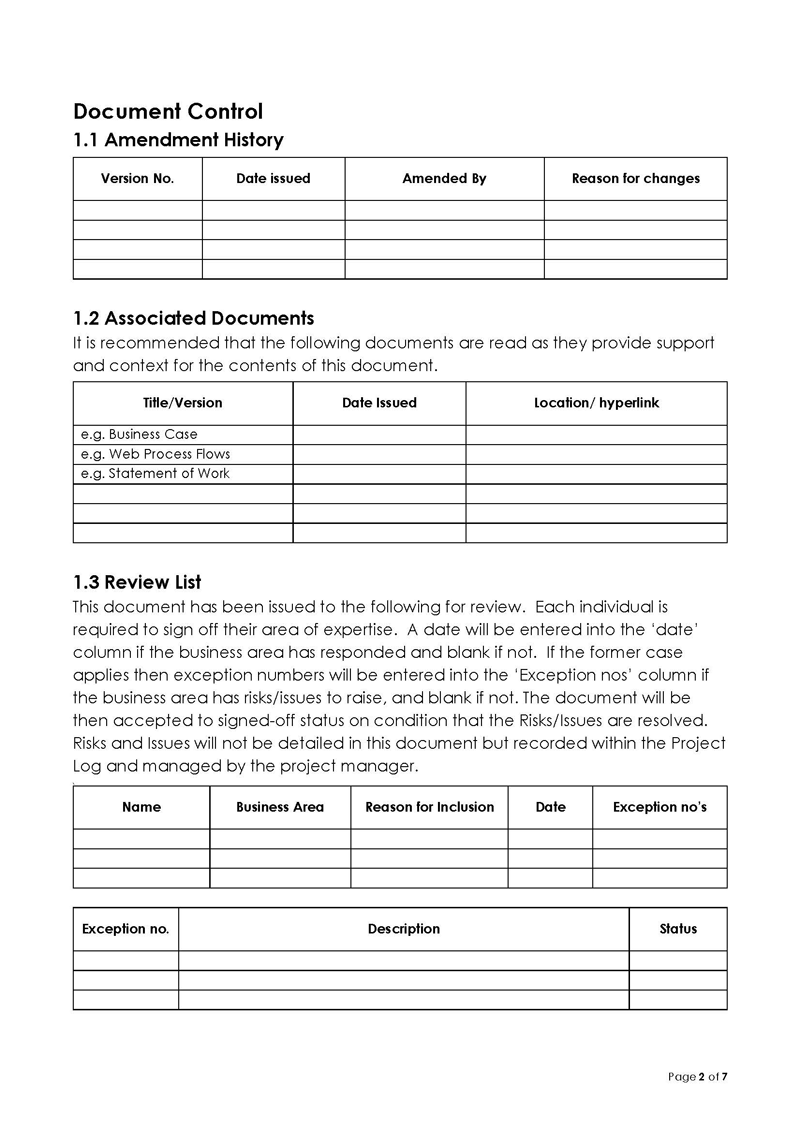
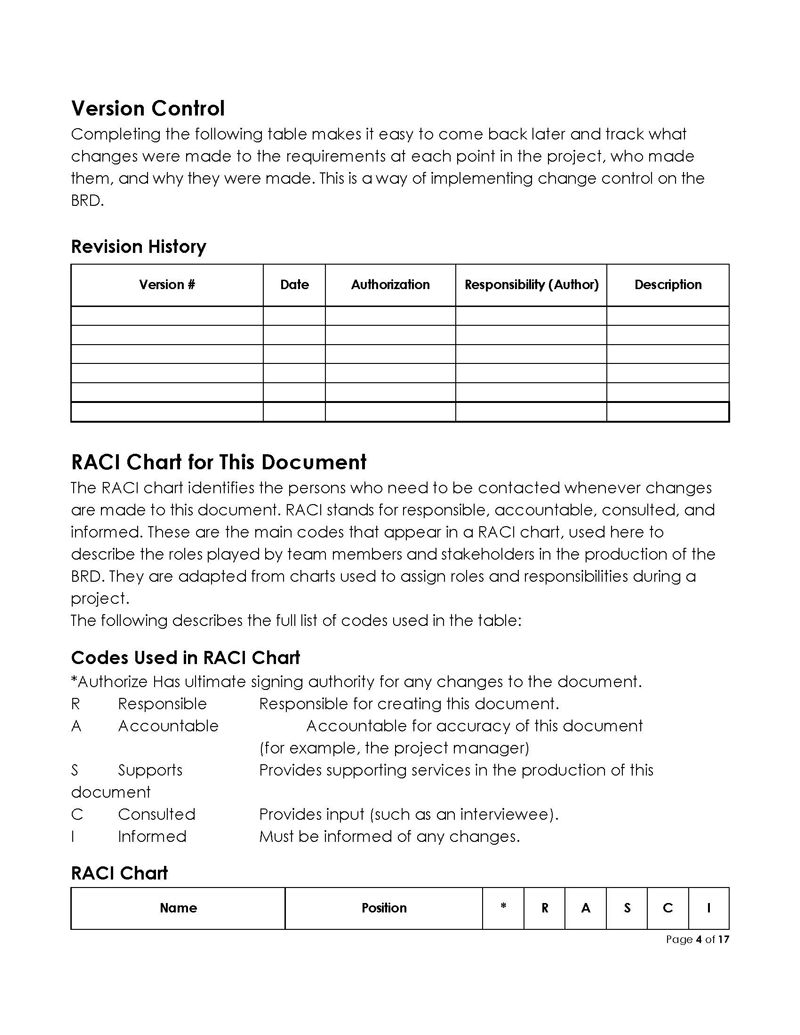
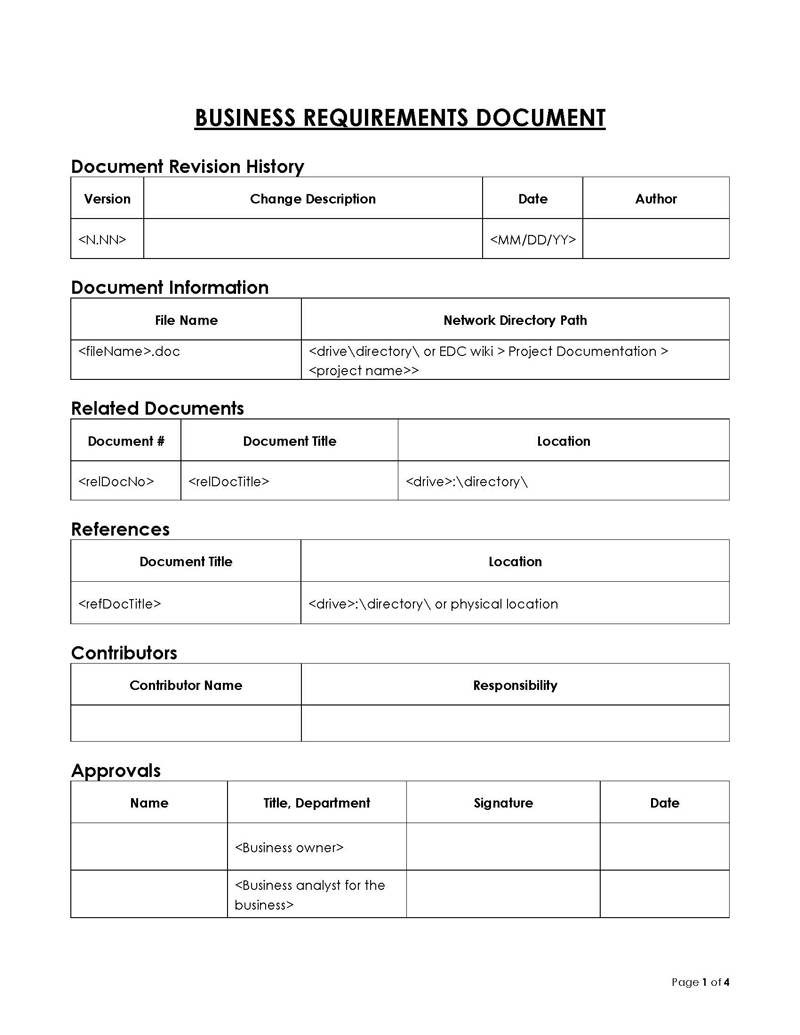
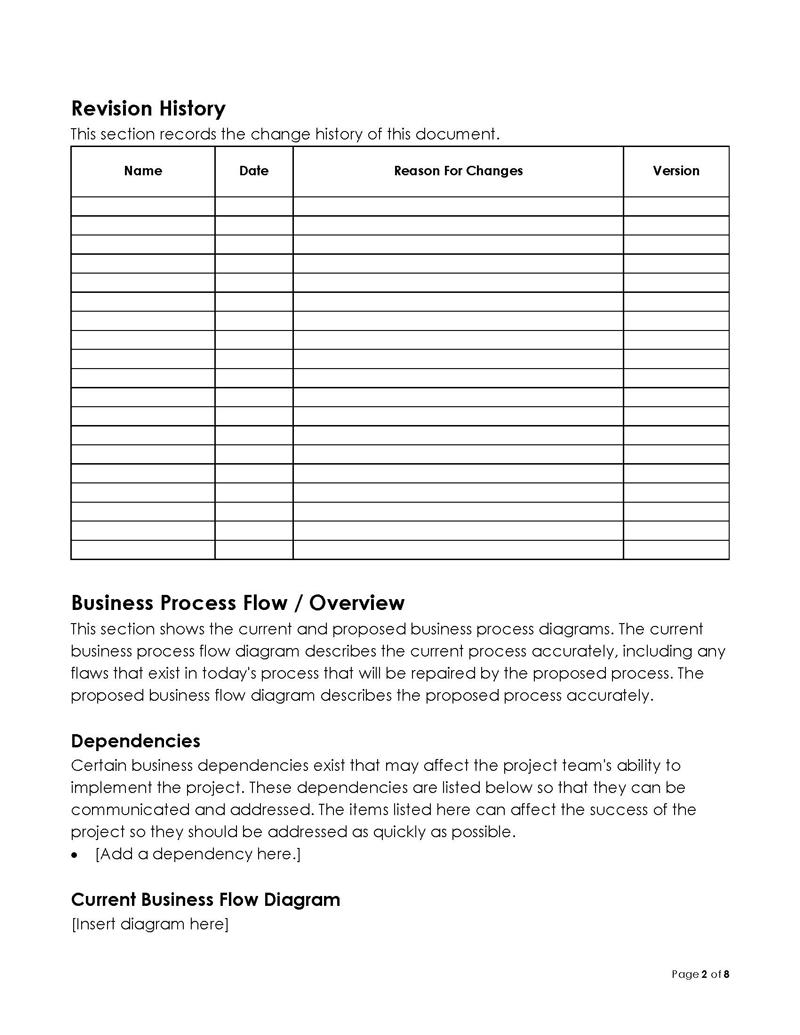
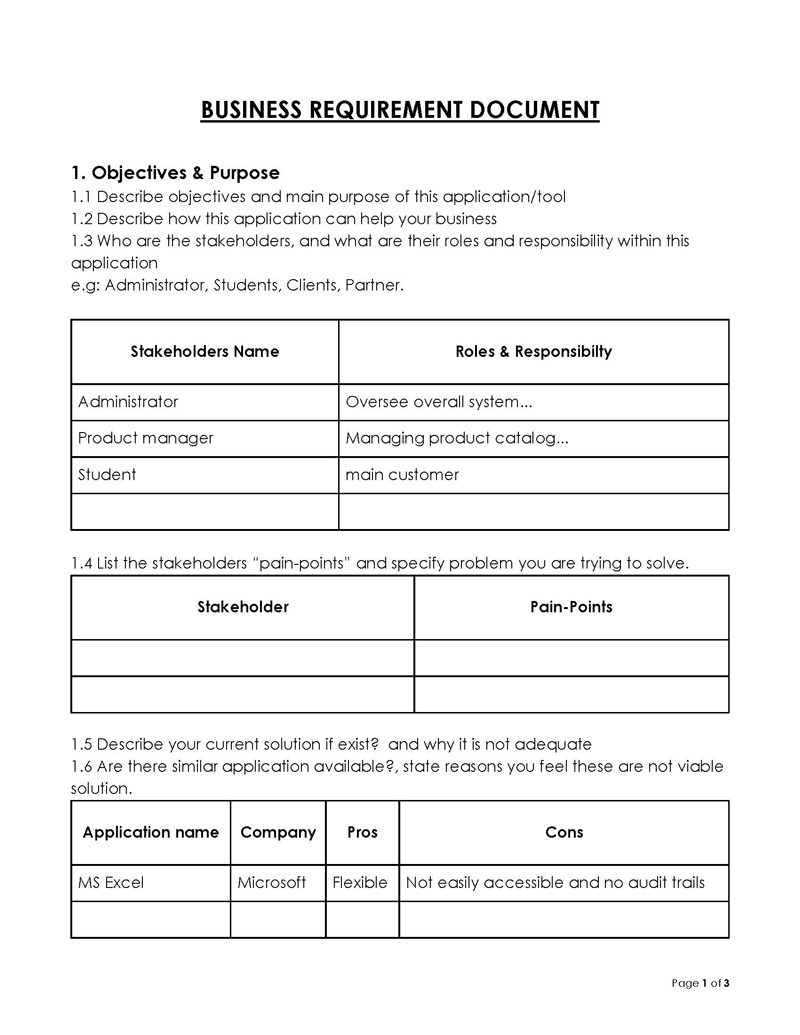
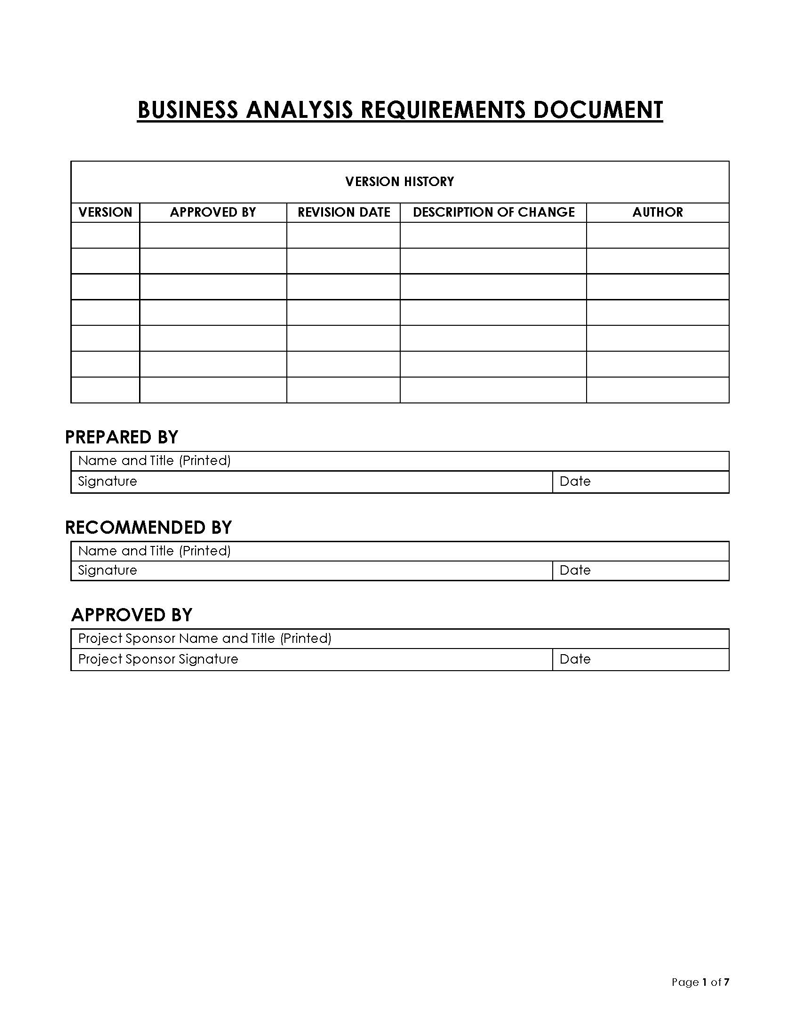
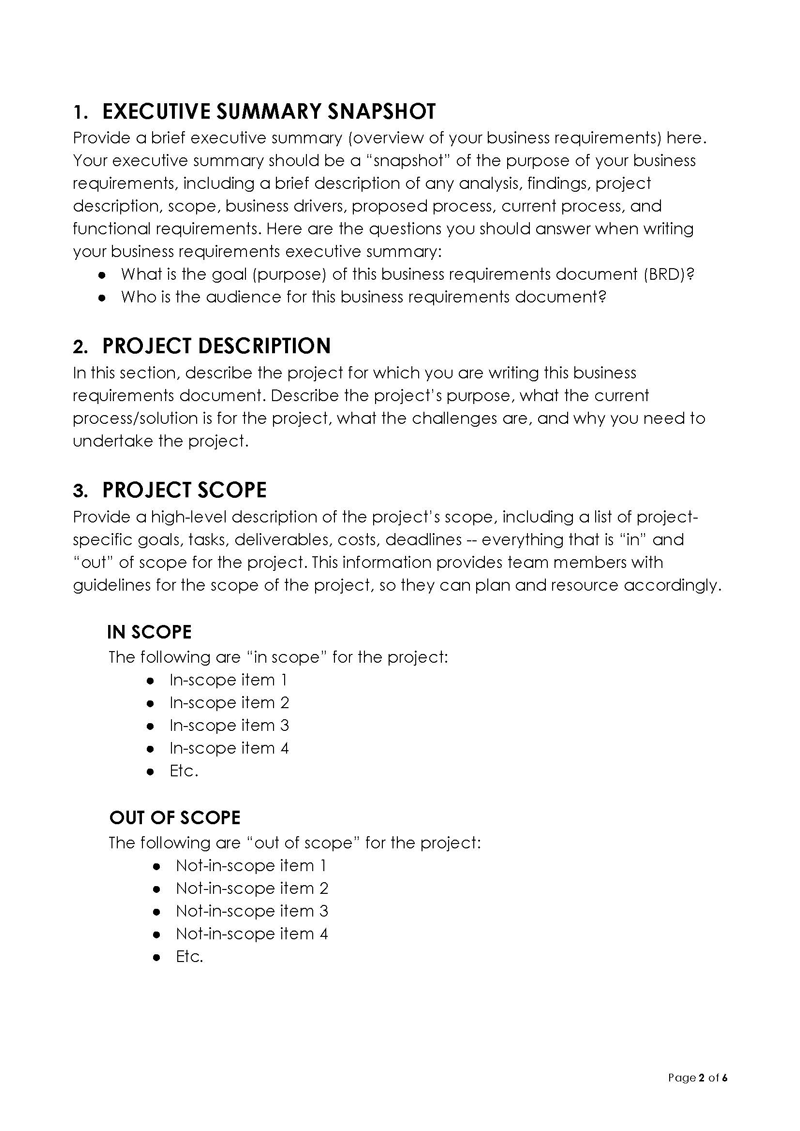
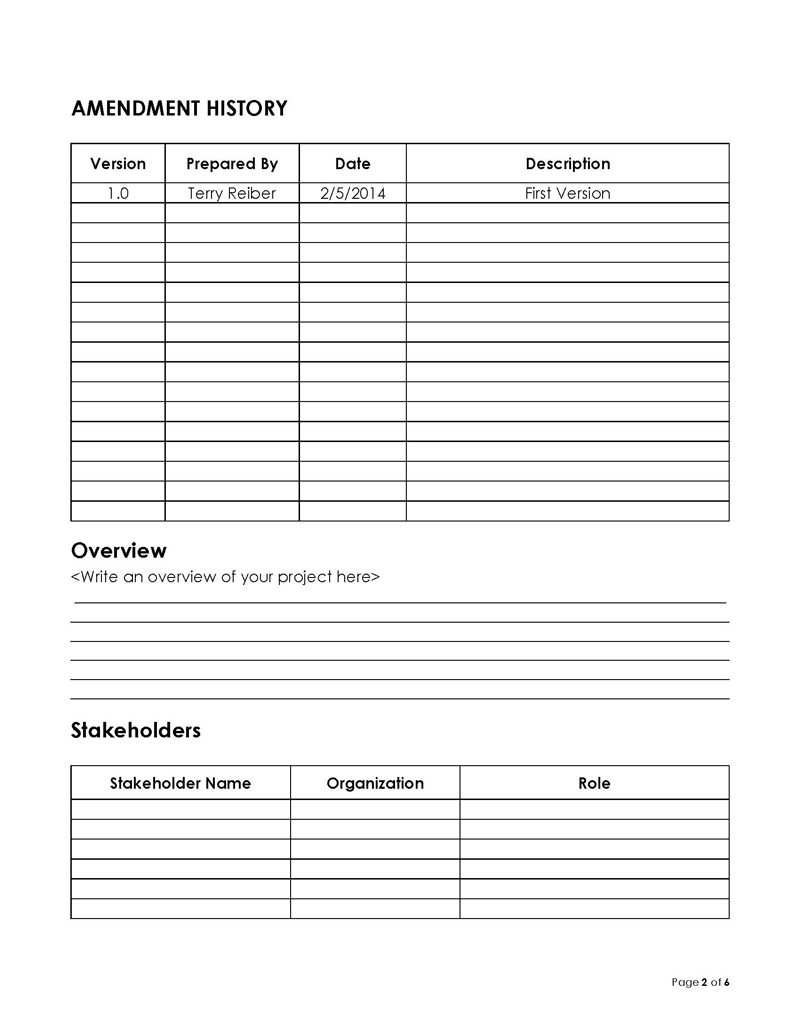
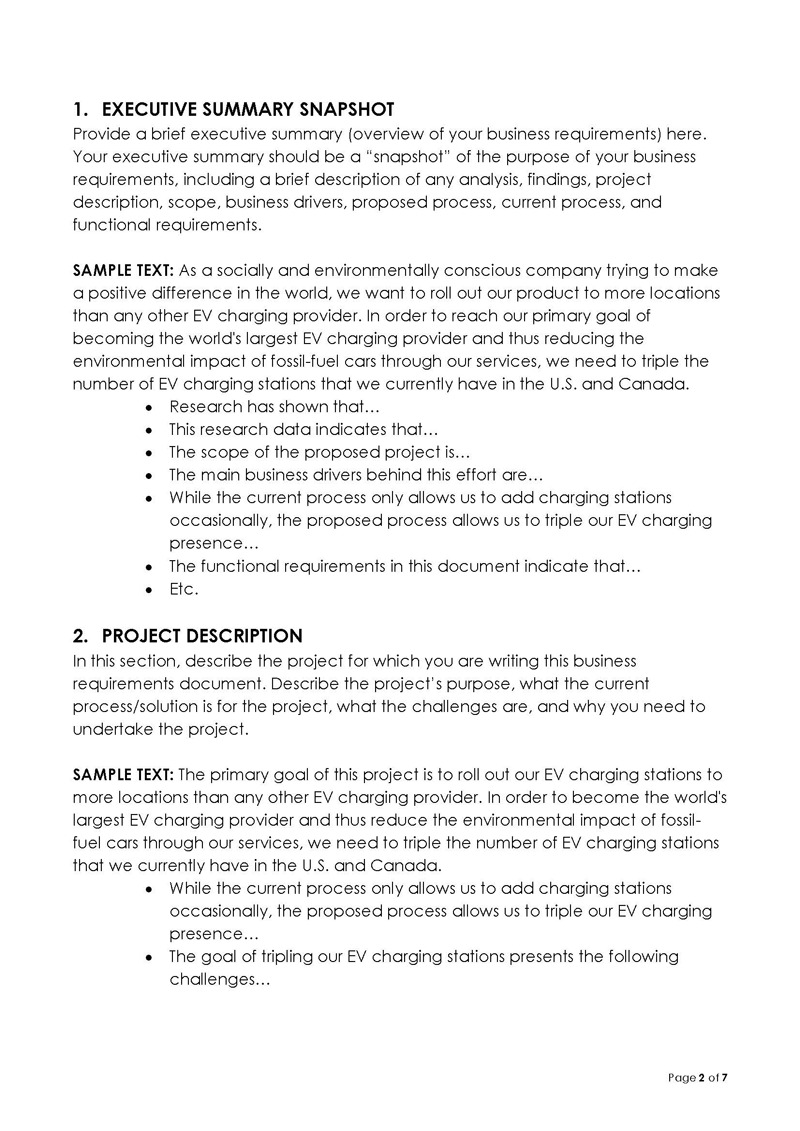
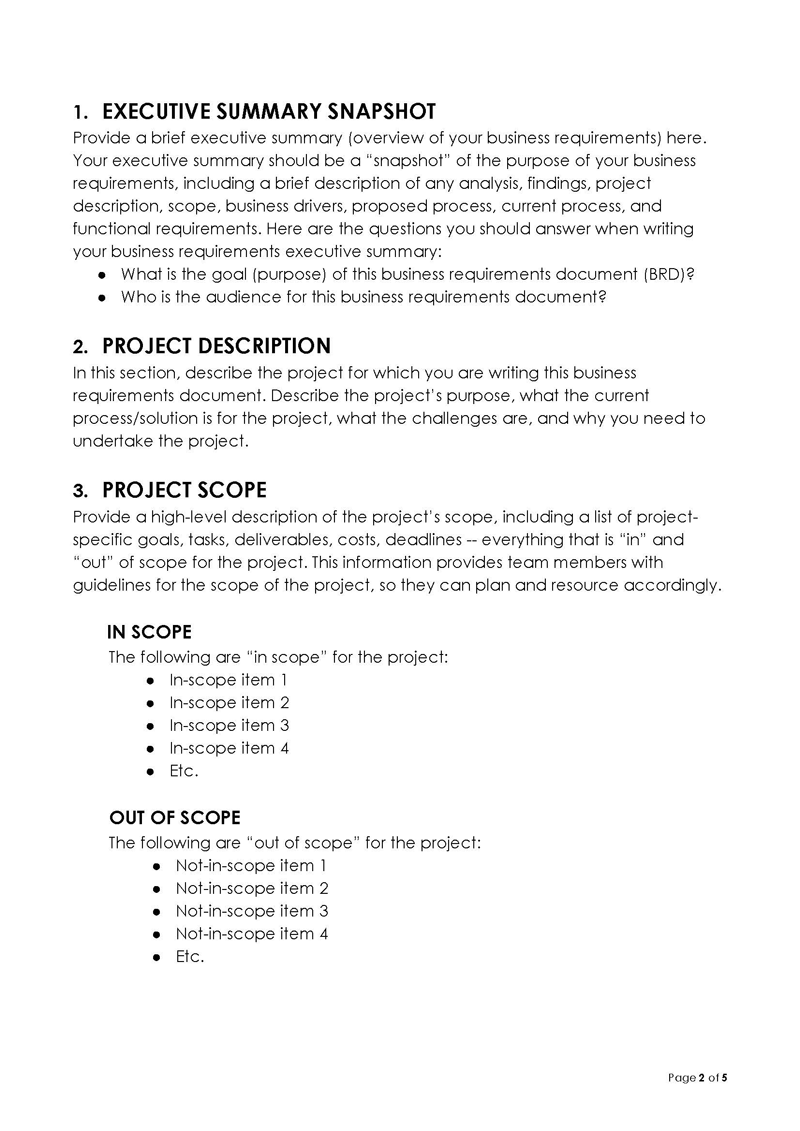
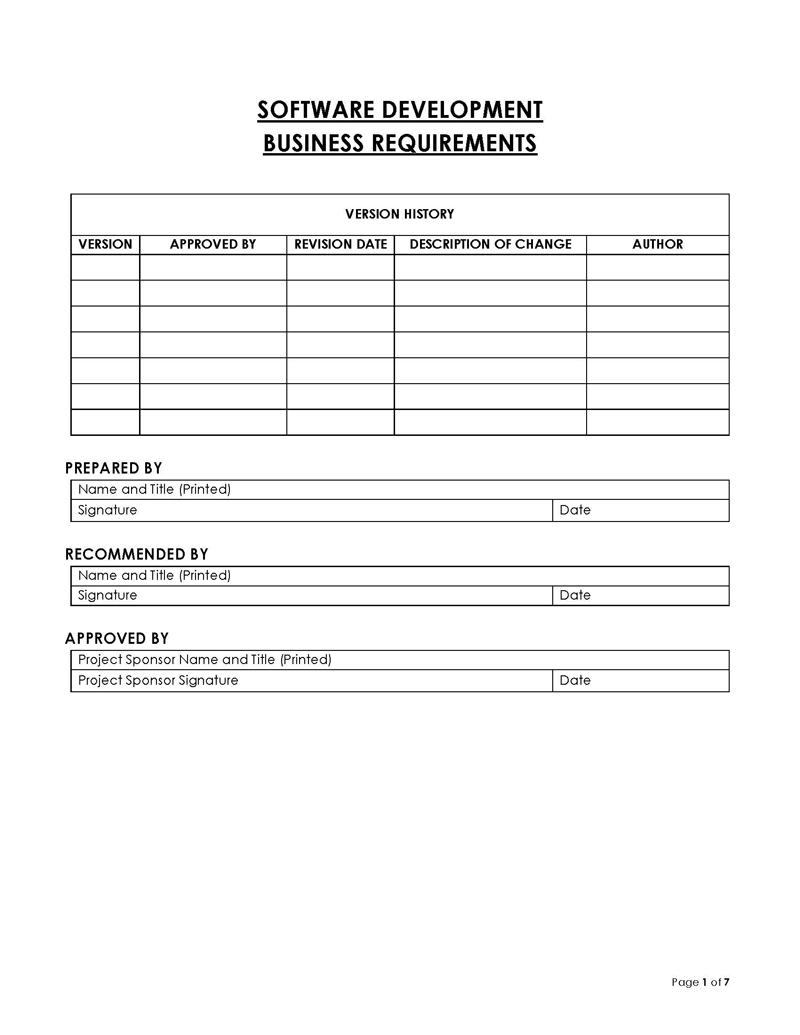
Excel format
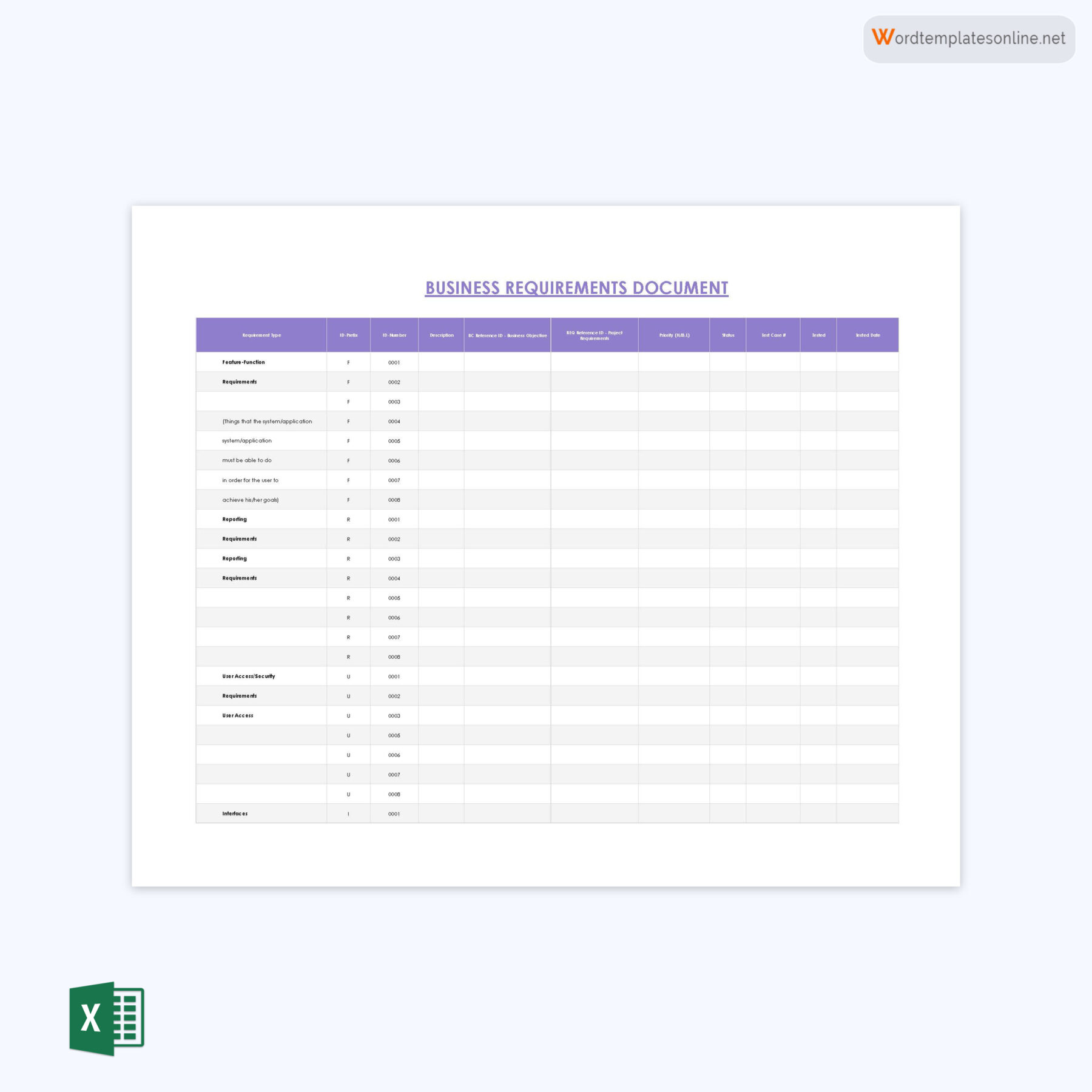

Difference Between BRD, FRD, and RFx9BRD
There are very subtle differences between a BRD and a functional requirements document (FRD). Knowing them will guarantee that the documents’ focus is properly communicated. It will also ensure that user needs and business objectives are met.
A FRD explains how deliverables will be accomplished, while a BR document explains what needs to be done. Moreover, an FRD outlines the functions required to fulfill the business need. The BRD answers the question of what the business wants to do, whereas the FRD answers how it should be done.
It is also vital to identify the differences between a BRD and a request for proposal. The main difference is that a request for a proposal is created to obtain proposals from various vendors, while the other is written for a specific vendor who has already been chosen by the company.
Step-by-Step Guide to Create BRD
The writer of this document for business requirements must clearly understand how it should be created. It will help ensure that vital details about the project are laid out appropriately.
The following is a step-by-step guide on how to create it:
Step 1: Review previous successful projects
Begin by reviewing previous successful projects to help identify documents associated with them. The details can guide the requirements of the current business conditions. The writer should note what was successful and unsuccessful, the obstacles the team had to overcome, the project’s limitations, and the data collection techniques used to determine the project’s requirements.
Step 2: Choose an appropriate template
An appropriate template should be selected for creating this business document. By offering a structure for the necessary elements, it saves the writer the time and effort required to create a completely new document.
Step 3: Describe the requirements for your company
The writer should identify the challenges facing the business to help identify what it needs. It will assist in developing a project or business solution to assist in overcoming the difficulties. They can be identified by key stakeholders such as employees, vendors, and product managers. They will help generate ideas for the project and identify what does and doesn’t work
Step 4: Define the BRD objectives
Next, using the information gathered, identify the objective of this document. Having clear objectives helps stakeholders find the best possible solution, directs them through the project’s next phase, encourages a more coordinated response from everyone involved, and gives the goals a foundation. The stakeholders can also use it to develop a thorough requirement scope.
Step 5: Get all parties involved
All parties involved in working on the project should contribute to the document. It enables the writer to gain a variety of viewpoints on what should be mentioned in it. The input can be obtained by brainstorming, surveys, focus groups, prototyping ideas, and interviews. These activities will give everyone a chance to get involved and provide original solutions.
Step 6: Identify the phases of the project
Follow up by identifying each phase of the project and mentioning the requirements. The writer may also include information on the work that must be carried out and the expected outcome of each phase.
Step 7: Establish standards for all requirements
The writer should establish a standard for all of the requirements of each of the identified phases. It will aid in ensuring that those involved in the project produce work of sufficient quality and quantity. It will also help ensure that the project’s desired outcome is attained.
Step 8: Develop a timeline
This business document should also include a timeline for when each phase of the project will be completed. It will ease the stakeholder’s ability to keep track of the progress of the project. To help the team stay accountable, the way that progress will be measured should also be mentioned.
Step 9: Review your document
Finally, the writer should review the entire document to ensure all details are explained appropriately. It will assist the author in determining which details demand more explanation. Additionally, it ensures that there are no grammatical or spelling errors in the documents.
Component of the BRD
Several components must be included in it. These components are aimed at enabling the creation of an informative document. They also help ensure that critical details about the business requirements are not left out.
These components include the following:
Executive summary
First, there should be an executive summary that highlights the key points of this document. It is usually written once the document is complete to help ensure that all the major points are captured. It also helps set the tone for the rest of the document, as it is the first thing a reader will see. Therefore, the executive summary must grab the attention of the reader.
Project overview and objectives
Secondly, a summary of the project and its objectives should be indicated to enable the reader to understand what the project is about and its goals. When formulating the project’s objectives, the writer ought to think about utilizing the SMART format. The SMART format states that the objectives should be specific, measurable, achievable, realistic, and time-bound.
Needs Statement
A needs statement should be indicated in this document of business requirements. The writer will be better able to convey the project’s significance and its effects on the business. It is also referred to as a background statement. The needs statement helps gain stakeholder trust and confidence in the project.
Project scope
The project scope should then be indicated to help provide information on what needs to be done to complete the project. The project’s perimeter is established by it. It also establishes the responsibilities of the company and those of the vendor. The project scope should be detailed to avoid confusion or misunderstanding with the vendor.
Financial statements
A financial statement details the project’s expected revenue as well as the project’s implementation costs. The BRD should also outline the funding source for the project.
Requirements (functional and personnel)
Follow it up by indicating the functional and personnel requirements of the project. The functional requirement helps establish what is required to implement it, while the personnel requirement outlines the human resources required and their cost. It helps ensure that the business meets all requirements to start the project successfully.
Key stakeholders
The key stakeholders should be identified in the template of a BRD. It should also mention their roles and responsibilities. Stakeholder identification ensures that project implementers are aware of their responsibilities.
Scope of the solution
The document’s description of the solution’s scope refers to the solution’s functional and nonfunctional components as well as the project’s delivery options. To help clarify the project’s complexity, risk, and chances of success, it should be mentioned in the scope of the project. It also establishes a foundation for the project’s estimated budget and schedule.
Project constraints
It should also outline the limitations of the project. To enable them to develop solutions, stakeholders must be aware of the project’s potential future constraints. Stakeholders can also set aside funds to help deal with the project’s constraints.
Quality control measures
The company can specify the level of quality it wants the finished product to have using the quality control measures listed in this document for business requirements. Establishing the quality standards of the products will help the company standardize its production. It also ensures that customer demands are met.
Cost-benefit analysis
Information on the costs associated with the business and expected benefits should be indicated. It helps establish whether the financial benefits outweigh the costs. The project’s viability may be affected by this.
Expectations and assumptions
The document should also outline the stakeholders’ expectations and assumptions about the project’s outcome. The stated expectations help to ensure that all stakeholders are on the same page regarding the project’s outcome. On the other hand, the assumptions made about the outcome assist stakeholders in making adequate preparations for future problems; for example, the product can be diversified to be viable in all seasons.
Glossary
Finally, include a glossary to help define any key terms or acronyms that stakeholders may be unfamiliar with. Be aware that BRD has a greater impact when technical vocabulary and business jargon are used.
Better Up Your BRD
Several practices should be considered when preparing this document of business requirements. They are aimed at increasing the efficiency of the document. They include the following:
Use encouraging words
It should use encouraging words. These words can help motivate the team working on the project. They may also persuade interested parties to support the endeavor.
Conduct research
Research past projects to assess and justify the requirements indicated in the current business document. It helps the writer identify the potential pitfalls and avoid making mistakes that may be costly. It also helps the writer determine if the current project is feasible.
Include visuals
The use of visuals like charts and diagrams should be encouraged. It will make it easier for the reader to absorb important information.
Validate the contents
The contents of this document should be reviewed and validated to ensure that all relevant detail has been provided accurately. It enables the writer to correct any errors made while writing. It also helps ensure that financial data has been captured accurately.
Apply proper elicitation methods
Apply proper elicitation methods like brainstorming, interviews, data analysis, and requirement workshops, among others. These methods will help make this document more effective. It will also ease the writer’s ability to gather a comprehensive set of requirements.
Use clear language
To ensure that multiple stakeholders can understand the document, the language used should be clear and simple.
Validate the documentation
The document can be validated by having it reviewed by stakeholders, who can then provide their feedback. It will help ensure that the stakeholders are satisfied with the document.
Get to know your stakeholders
To make the document relevant to the stakeholders’ needs, the writer should get to know them. It will assist the writer in communicating the requirements more efficiently and effectively.
Final Thoughts
A BRD outlines the objectives and expectations of a business solution for a project. Its main aim is to get stakeholders on the same page regarding what a project needs and what its outcome should look like. It should outline a description of the project and the objective of the requirements document, among other details.
It is also critical for the writer to understand the distinctions between a BRD, a functional requirements document, and a request for proposal. A thorough understanding of these three documents will help the writer fully utilize them to ensure the project’s success. The writer should consider using a template to save time and money and to make the writing process easier.




